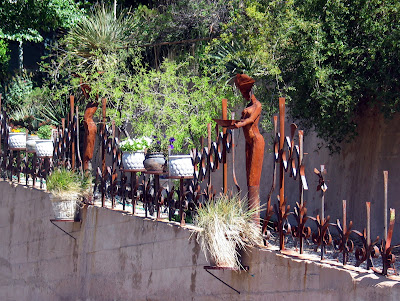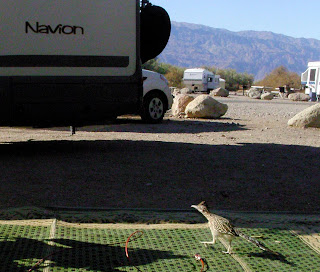When my new friend Jerry tells me about the wooden head, I giggle. He says it's on a reclining statue of Saint Francis Xavier at the San Xavier Mission on the Tohono O'otham Nation in Tucson.
The statue looks like the long-dead Jesuit is lying in state, like his death occurred yesterday and we're here today to pay our respects. A blue cloth drapes over his "body" and that wooden head sticks out from one end. Jerry warns me to watch for the men who walk right up to that statue, slide a hand under that wooden head, then heft it three times. Smile. Turn and walk away.
Legend has it that only a virtuous man, a man of high moral standing, can lift that head. If a cheating man tries, the head turns to solid lead.
Jerry, laughing so his chests hops up and down, tells me to watch for the women who drag in their men to lift that head.
So I'm at the mission, and inside I find the sanctuary shaped like a cross and adorned with more than 300 painted or sculpted angels, 100 images of saints and a dozen portrayals of Mary, Christ's mother.
Straight ahead is the altar. To the left, I spy my saint, stretched out just as Jerry described.
I walk over and notice a number of people in prayer. Candle shadows flicker across their faces. Some nod as they pray, others stare. Men hold their hats in their hands. When it's my turn to stand next to the saint, I see pictures pinned to that blue cloth, pictures of children, an ultrasound, families. There are a lot of Jesus-shaped charms pinned to the cloth, too.
I'm not a Roman Catholic, but I understand faith. My own, my faith in Jesus, is quite deep. So even though I don't know what these tokens mean, I know those who placed them here did so out of great faith.
So when a man slips past me, slides his hand under that wooden head, I smile, but I do not giggle. I smile because I know what he's here for. But I do not giggle. Because he's a man of faith, a man who believes.
And I'd like to think he's a virtuous man, because he lifts that head, once. Twice. Three times. Never does it turn to lead.












